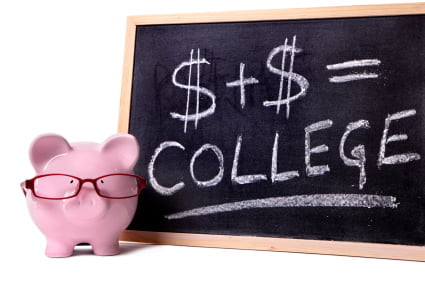Unless you or your child has earned scholarships offering a full-ride for college, or you’re able to pay for school with your own funds, you’ll probably have to apply for financial aid or some type of college loan.
After you complete your Free Application for Federal Student Aid (FAFSA), your college will send you a financial aid offer that tells you whether you qualify for student loans, grants or some combination of aid.
Scholarships and grants are preferable, since they don’t have to be repaid. But that free money for college isn’t always available to every student – so some loans may be necessary.
Taking out a federal student loan isn’t a decision to be made lightly. After all, the average college graduate now has more than $26,000 in student loans, according to the College Board.
So before you sign on the dotted line and agree to repay many thousands of dollars in student loans, there are several things to consider when you’re deciding how to pay for college.
The Benefits of Federal Student Loans
One of the biggest benefits of taking out a federal student loan is that the interest rate is often lower than that of a private student loan or personal loan, and much lower than interest rates on a standard credit card.
For example, Stafford Loans are a popular type of direct federal loans. Subsidized Stafford Loans for the 2012-13 academic year are currently set at fixed rate of 3.4% for undergraduate students. (“Subsidized” loans are those where the government pays the interest on the loan while the student is in school).
Interest rates on unsubsidized Stafford Loans for graduate students are fixed at 6.8% for the 2012-13 school year. (As of July 1, 2012, graduate and professional students no longer qualify for subsidized Stafford Loans).
By comparison, interest rates for private student loans are variable and typically range from about 6% to 10%.
Aside from generally lower interest rates, federal loan offer these benefits over private student loans:
- better loan deferment options
- better loan forbearance options
- better loan consolidation options
- loan forgiveness options
- loan cancellation options
In other words, there exist far more ways to postpone paying, to reduce, or even to eliminate your federal loans than there are with private student loans.
There are two key types of federal student loans: the William D. Ford Federal Direct Loan Program, and the Federal Perkins Loan Program. Here’s a quick, closer look at these two programs:
The William D. Ford Federal Direct Loan Program
Also known simply as the Direct Loan Program, this is the largest federal student loan program available and the U.S. Department of Education serves as the lender.
The direct loan program includes four types of loans, and some are available only to graduate and professional students. These four types of loans are:
- Direct Subsidized Loans – a need-based loan offered to eligible undergraduate students
- Direct Unsubsidized Loans – offered to eligible undergraduate, graduate, and professional students (not a need-based loan)
- Direct PLUS Loans – offered to graduate or professional students, and parents of dependent undergraduate students for expenses not covered by financial aid
- Direct Consolidation Loans – an option to combine all eligible federal student loans into a single loan with a single loan servicer
Loan amounts can vary by school and may also depend on your year in school, your status as an undergraduate or graduate student, as well as how much other financial aid you are receiving.
But you can’t borrow an unlimited amount of federal student loans.
Undergraduate students can qualify for loans up to $5,500 per year for a Perkins Loan and a maximum of $5,500 to $12,500 per year for a Direct Subsidized or Direct Unsubsidized loan.
Graduate students can get up to $8,000 per year for a Perkins Loan and up to $20,500 per year for a Direct Unsubsidized Loan.
Currently, Parent and Graduate PLUS loans obtained in the 2012-2013 academic year are set at a fixed interest rate of 7.9%.
The Federal Perkins Loan Program
With this loan, the school serves as the lender and the loan is only extended to undergraduate, graduate, and professional students who can demonstrate exceptional financial need.
The interest rate for a Perkins loan is 5% in 2012-13, and the amount you receive will depend on how much is available at your particular school, and your level of financial need. Keep in mind, however, that not everyone who qualifies for a Perkins Loan ends up getting one.









Comments are closed.